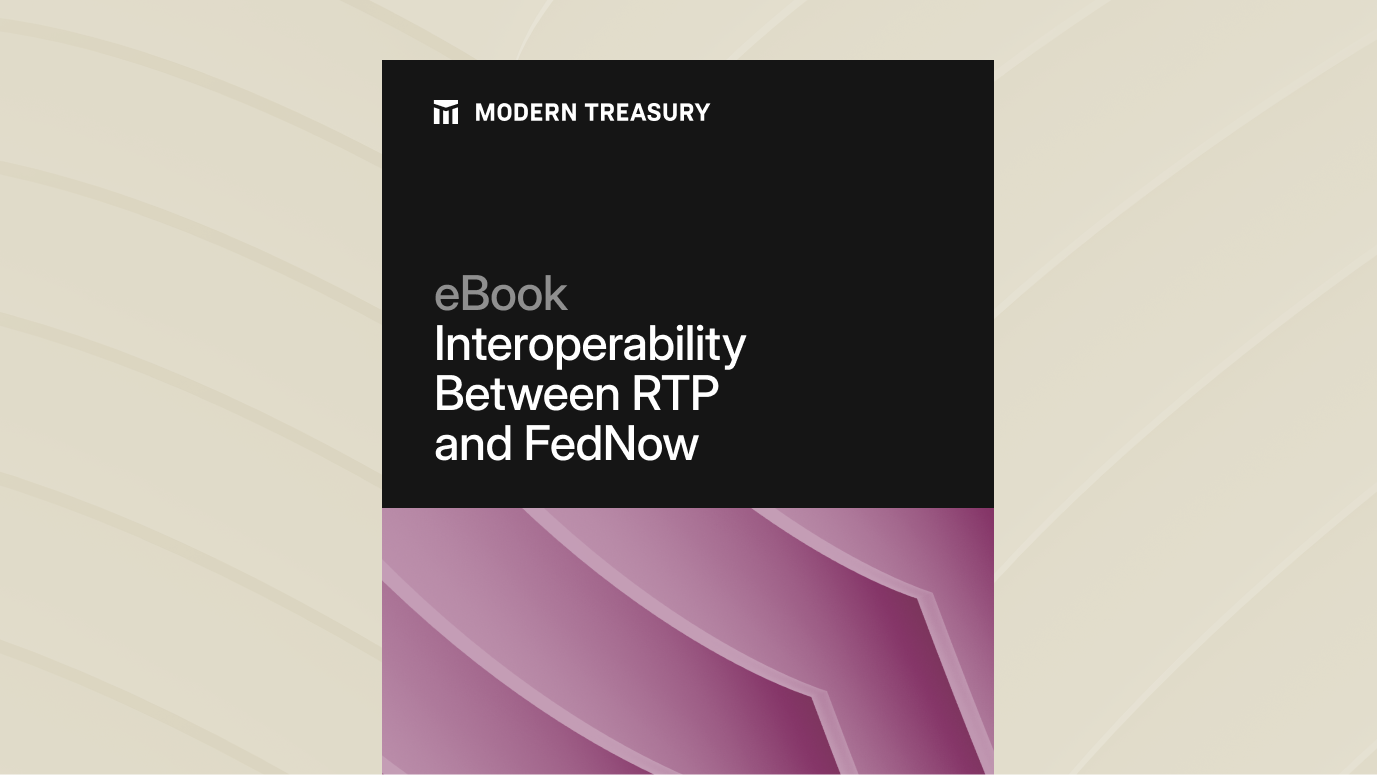Join us at Transfer 2025 to hear how industry leaders are building payments infrastructure for a real-time world.Register Today →
A Beginner's Guide to ACH
ACH, or Automated Clearing House, is an electronic network used to communicate financial transactions.

Although it can sometimes seem like it, money doesn’t magically zip from one bank account to another. While money transferred via ACH is moving around digitally as opposed to say, via stagecoach, the process is a little more involved.
Quick overview of ACH
ACH, or Automated Clearing House, is an electronic network used to communicate financial transactions.
ACH, eCheck, direct debit, and EFT all refer to the same type of money movement.
How ACH works
Only banks can initiate ACH transactions. Businesses that want to tap into the security and simplicity of ACH payments need to partner with a bank that deals with ACH transfers (not every bank does). But there’s a few more stops and steps, including routing the funds through an intermediary, before money movement can occur between bank accounts.
Now we’ll follow a payment through the process using your phone bill as an example. Let’s say you pay your phone bill via ACH.
When you first set up your account with your phone service provider, they likely used one of the most common forms of account verification — a micro-deposit into your bank account that they retracted within a few days. Once your account was greenlit, your service was turned on, and you started talking, texting, and using up data. Now it’s time to pay the bill.
Instead of expecting a check each month, your phone service provider asked you to opt into automatic bill pay. This gives them the authorization to take money from your account on a recurring basis. This is also called an ACH debit. This month you owe $95.
Your phone provider starts the request for payment, meaning the transfer originated from them. For that reason, they’re called the Originator. Your phone service provider, the Originator, sends ACH files with the amount of the transaction and routing and bank account info for your account to its partner bank. In this case, the partner bank is called the Originating Depository Financial Institution, or ODFI. The ODFI then facilitates the request for payment on behalf of the Originator.
Here we’re following an ACH debit, but note that an ACH credit follows the same path. The difference with an ACH credit is that money is being given. If your phone service provider accidentally overcharges you one month, they’ll initiate an ACH credit to correct the mistake.
With all this data flying around, this is where Modern Treasury comes in. Modern Treasury matches bank statements with the history of a company’s financial transactions. Now finance teams can focus on mission-critical problems of the business and not piecing together the jigsaw puzzle of bank transactions by hand.
Back to our ACH debit example. The ODFI collects all the ACH files that come in for the day before forwarding them as a batch to a clearinghouse for processing. Typically, the clearinghouse is the Federal Reserve. However, there is a second large-scale operator called the Electronic Payments Network, or EPN. The EPN is a subsidiary of The Clearing House (TCH), a banking association and payments company that is owned by the largest commercial banks. These two clearinghouses, sometimes referred to as ACH Operators, act as the intermediary between the ODFI and the RDFI on all ACH transfers.
At this point, you the customer might see a Pending Transaction listed in your bank account alongside the soon-to-be deducted $95. Though many payment processors advertise the ACH payment and reconciliation process as taking 3-5 days, you can cut that time down by using Modern Treasury. Modern Treasury can process same-day debit and credit in less than 24 hours, regular debit in one day, and regular credit in 1-2 days.
The next business day, the clearinghouse sorts the ACH transactions and sends them to the correct Receiving Depository Financial Institutions, or RDFI. Don’t get confused here — They’re called Receiving because they’re accepting the ACH files, not the payment itself. Though note that later in the process when transactions are reconciled, the RDFI may receive a credit or debit.
When the RDFI gets the ACH file, it will debit its customer’s account for the total and place the money into what’s called a Settlement Account. In the example of the phone bill, you’ll log into your bank account and see that $95 has been taken out in the name of your phone provider.
The clearinghouse provides a balance sheet to each bank listing the debits and credits from their customers’ accounts. The clearinghouse then automatically debits or credits the correct amounts into each bank’s Settlement Account.
Now you’ve successfully paid your bill, and your phone service provider is $95 richer — all without ever having to whip out your checkbook.
Glossary
- ACH: Automated Clearing House; The electronic network used to communicate financial transactions.
- ACH credit transfers: Direct deposits and payments made over the network.
- ACH debit transfers: Direct debiting for credit, debit, and ATM transactions.
- Clearinghouse: A financial institution intermediary between ODFI and RDFI; typically the Federal Reserve.
- EFT: Electronic Funds Transfer; another name for ACH since all payments are communicated digitally.
- EPN: a second large-scale clearinghouse, or operator; the EPN is a subsidiary of the Clearing House Payments Co. LLC, a banking association and payments company owned by the largest commercial banks.
- Originator: The institution, merchant, person that initiates the transaction.
- ODFI: Originating Depository Financial Institution; The partner bank that facilitates the request for transfer.
- Operator: Another name for a clearinghouse
- RDFI: Receiving Depository Financial Institution; The partner bank that receives the ACH file requesting a transfer.
- Settlement Account: The well-funded account ACH-participating banks use to fund and accept transfers.
Save time and money when you automate payments and accounting with Modern Treasury. Request a demo today.
Try Modern Treasury
See how smooth payment operations can be.







